2019 ”见·所未见” 虞子骏个展专访 | INTERVIEW WITH YU ZIJUN

1. 此次个展展出了您所创作的从上世纪60年代至20世纪初的水彩作品,其中绝大部分作品从未在公众前亮相。作为92虽高龄的前辈艺术家,当您回顾自己长达八十多年的艺术生涯时,是怎样的一种心情?
虞子骏:80多年来我坚持画水彩,因为喜爱所以坚持。这八十多年来是中国变化最多最快的八十年,上世纪30年代到50年代是我的学生时代,但战争不断(抗日战争、太平洋战争、解放战争); 50年代后就是我工作的时代,一方面教学工作繁忙,另一方面政治运动又不断。 一直到文革结束,直至80年代改革开放后才开始能真正安下心来进行创作。1988年退休后才是我集中创作的高峰时期。回首八十多年走过的水彩之路,心中感慨万千, 很庆幸现在的艺术家能在和平年代自由地进行艺术创作。
时代变了,我的水彩画也在变,写实、写意、想象、抽象……但有一点我始终坚持着:维护美的原则,走有中国东方特色的水彩之路。

1. This solo exhibition shows your watercolor artworks from the 1960s to the early 20th century, most of which have never been exhibited in the public. As a highly respected artist at the age of 92, how do you feel when you look back on your artistic career of more than 80 years?
Yu Zijun: I have been always fond of watercolour, the passion for watercolour drives me to create throughout my life. In the past 80 years, China has had dramatic changes. From the 1930s to 1950s, I experienced Pacific War, the Second War against Japanese, the Liberal Civil War during my school days; From the 1960s-1970s, I witnessed the cultural revolution during my professional career; Until China’s open-door policy in the 1980s, I started to settle myself down to paint. After my retirement in 1988, I embraced the best time for my art creation.
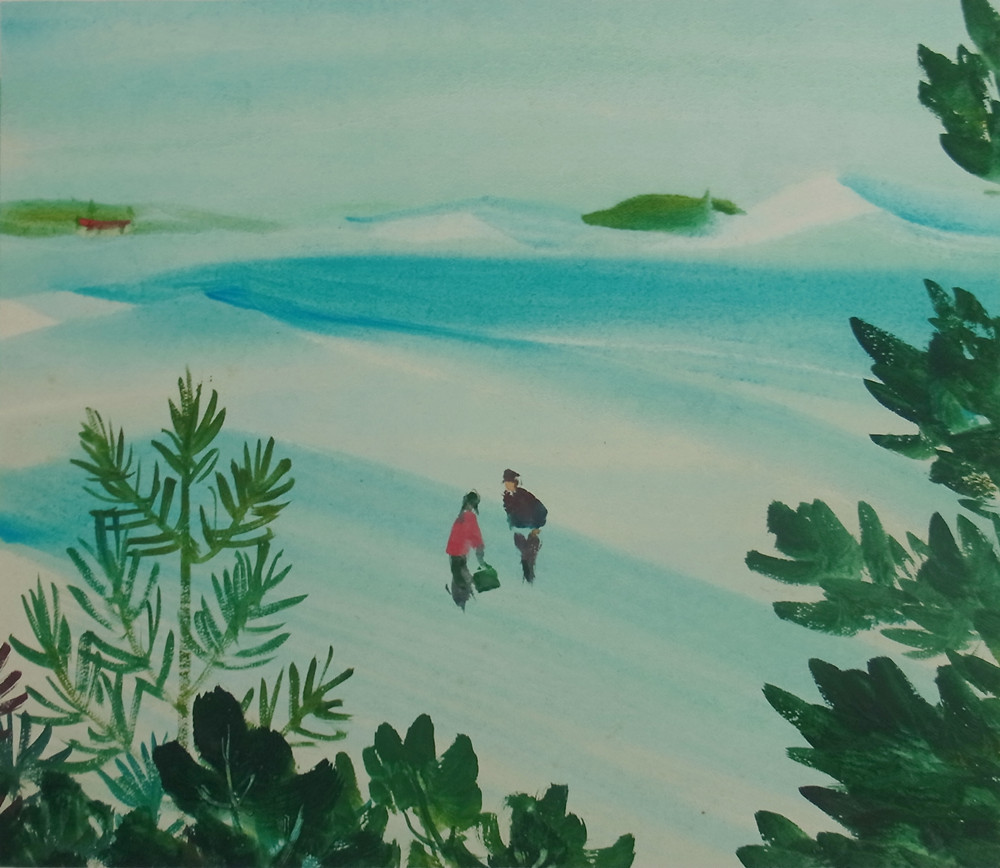
Looking back on these years, I find that it’s very lucky for today’s artists to work on art with more freedom in the peaceful days.
The world has changed and advanced, I keep developing my watercolors as well. Abstract, realistic, impressionist, imaginative … Nevertheless, there is one thing I always insist to, which is to keep the principle of the beauty and taking the road of watercolor with oriental characteristics.
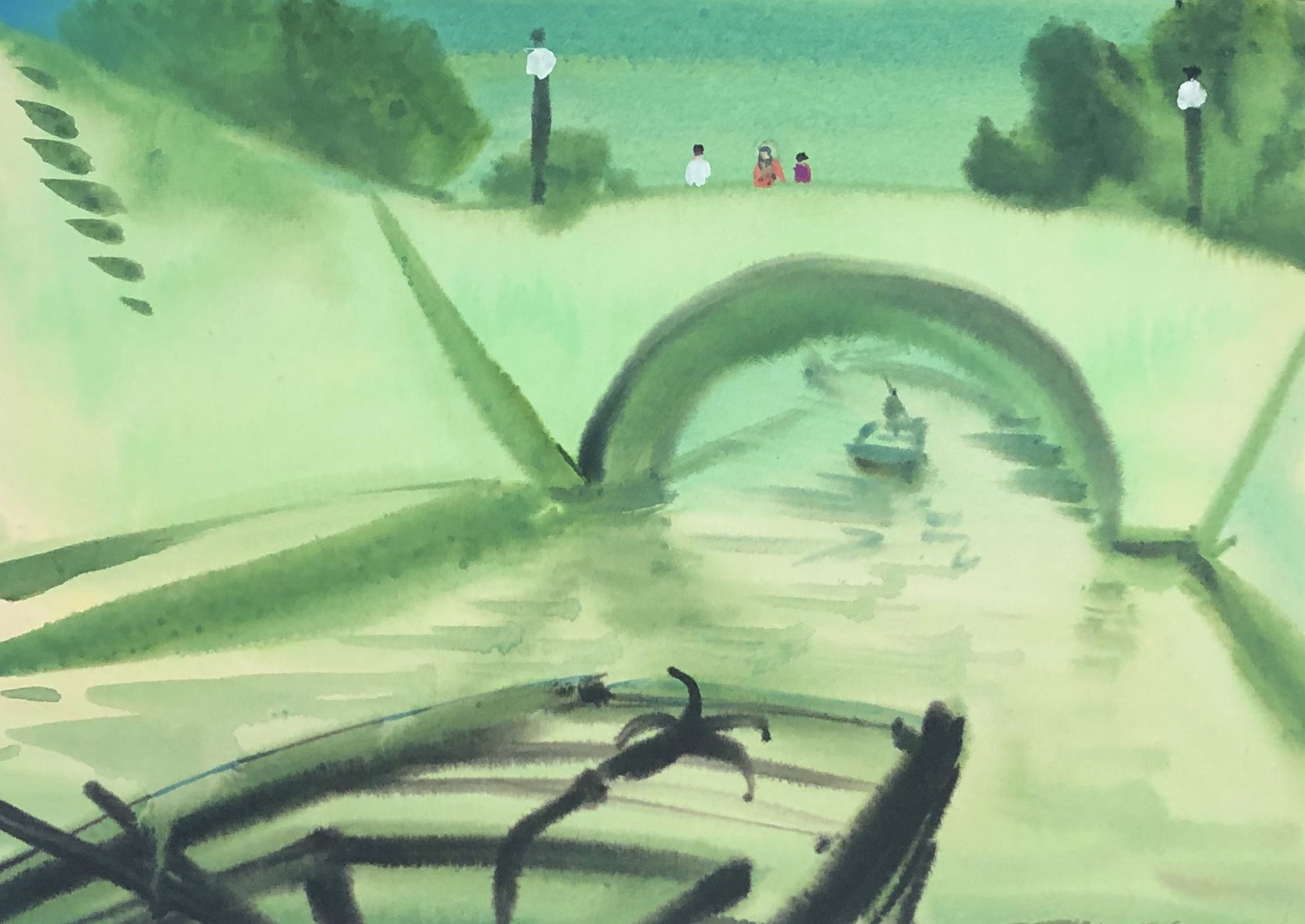
2. 作为上海美专的学生,您曾从师于刘海粟,张充仁,冉熙等艺术大师。从先师们的言传身教中,您所学到的对您的艺术和人生最有影响或者最获益的是什么?
虞子骏:我很幸运,遇见了很多好老师。他们都是很有名望的近代艺术家。钱君匋老师是我中学时期最早的启蒙老师,是个多才多艺的艺术家,文学、美术、音乐样样在行,他对我的启发很大。在美专学习时,我在张充仁老师的画室学习。他有一套欧式教材,要求很严,他的水彩既有中国韵味,又有地中海色彩,生动美丽。冉熙老师画的水彩就像他的为人,直爽痛快,大刀阔斧,而又有收拾,水分特足,笔触特强,很中国式的画法。
刘海粟老师是我们的校长,也是我的人体油画老师。他主张写实不是依样画葫芦而是要根据自己的个性来发挥,画画要像自己不要像老师,要表现自己的感受,思想和性格。我一直铭记着他曾说过的一句话:“生命的价值并不在于时间的长短,而在于是否利用了这有限的生命,去为自己的民族创造物质与精神财富。”

2. As a student of Shanghai Academy of Fine Arts, you have studied under masters such as Liu Haisu, Zhang Chongren and Ran Xi. How do they influence on your art and life the most?
Yu Zijun: I was lucky to meet so many good teachers. They are all renowned modern artists. Mr. Qian Junyao was the earliest enlightenment teacher in my life. He was an expert in literature, art and music. He inspired me a lot. While studying in Shanghai Academy of Fine Arts, I studied in the studio of Mr. Zhang Chongren. He has a set of European-style text books with strict requirements. His watercolor artworks have both Chinese charm and Mediterranean colors which are vivid and beautiful. Mr. Ran Xi’s art style is just like his personality, that is straightforward and bold. His paintings are neat, full of water with strong brush strokes, quite similar to the Chinese ink.
Mr. Liu Haisu was our principal and taught me in oil painting, He advocated that figurative painting is not to copy the object, is to represent it you’re your own feelings, perspectives and personality. Never paint in the same way as your teacher. I have always remembered one sentence he used to said: “The value of life does not lie in the length of time, but in the use of this limited life to create material and spiritual wealth for his nation.”

3. 作为前辈艺术教育工作者,您对现在的艺术教育有什么期许吗?
虞子骏:艺术教育工作是国家教育工作的重点之一, 对有着三千多年文化史的中国来说显得尤为重要。从目前来看,我国最需要的是既有科学引领又有艺术修养的国民,在外国,科学家都很有艺术修养,而我国把科学与艺术明显分开,这就不妥了。既重科学又重艺术,这样才会产生更多一流的科学家和艺术家,对此,我深信不疑。

3. As a senior and well experienced artist and art educator, do you have any expectations for the current art education nowadays?
Yu Zijun: Art education is one of the key fundamental points of our national education, especial to China, a nation of more than 3,000 years recorded history, it is particularly important. From what I can see, what China needs the most is those who can lead scientific domain as well as with artistic accomplishment. In abroad, many scientists are accomplished in art, but China clearly separates science from art. This is not good. Emphasizing both science and art will produce more top-class scientists and artists which I am convinced.
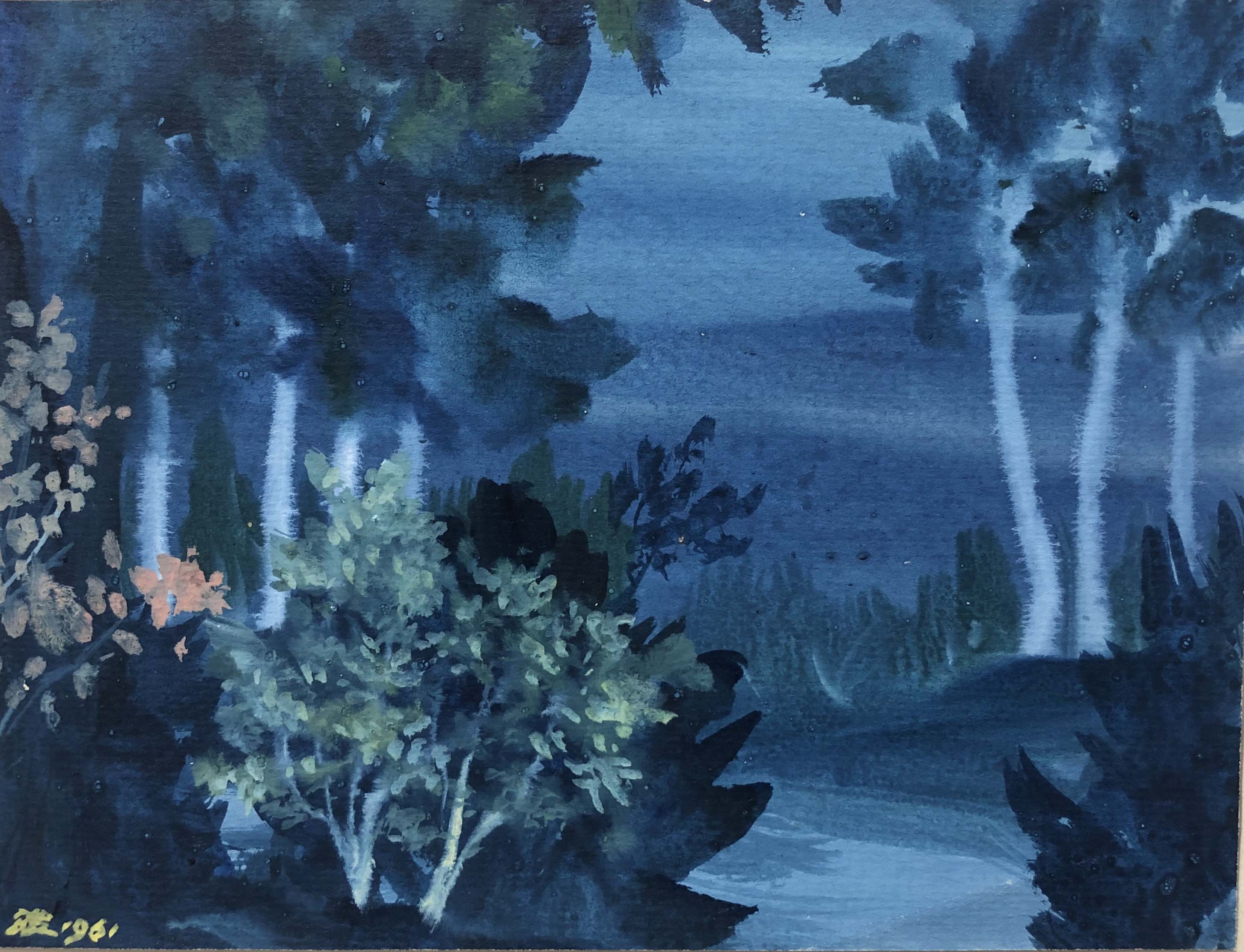
4. 在上海美专学习期间,您即学油画也学水彩,既学建筑也学音乐,最终您选择了水彩作为您的艺术创作语言,为何您对水彩情有独钟?
虞子骏:我喜爱水彩,从5,6岁起就开始画水彩。因为水彩很适合我的个性,它有天然之美且变化无穷,色彩亮丽通透,用笔潇洒随意,与中国画法一致,是抒情的理想画种。我喜爱画水彩风景,因为我喜爱自然美,我很怕与人打交道,所以尽量不画人物,特别是大人,因此我的画几乎都是风景,风景虽不会说话,但却能与人交心,景能引发人们的诗情画意。
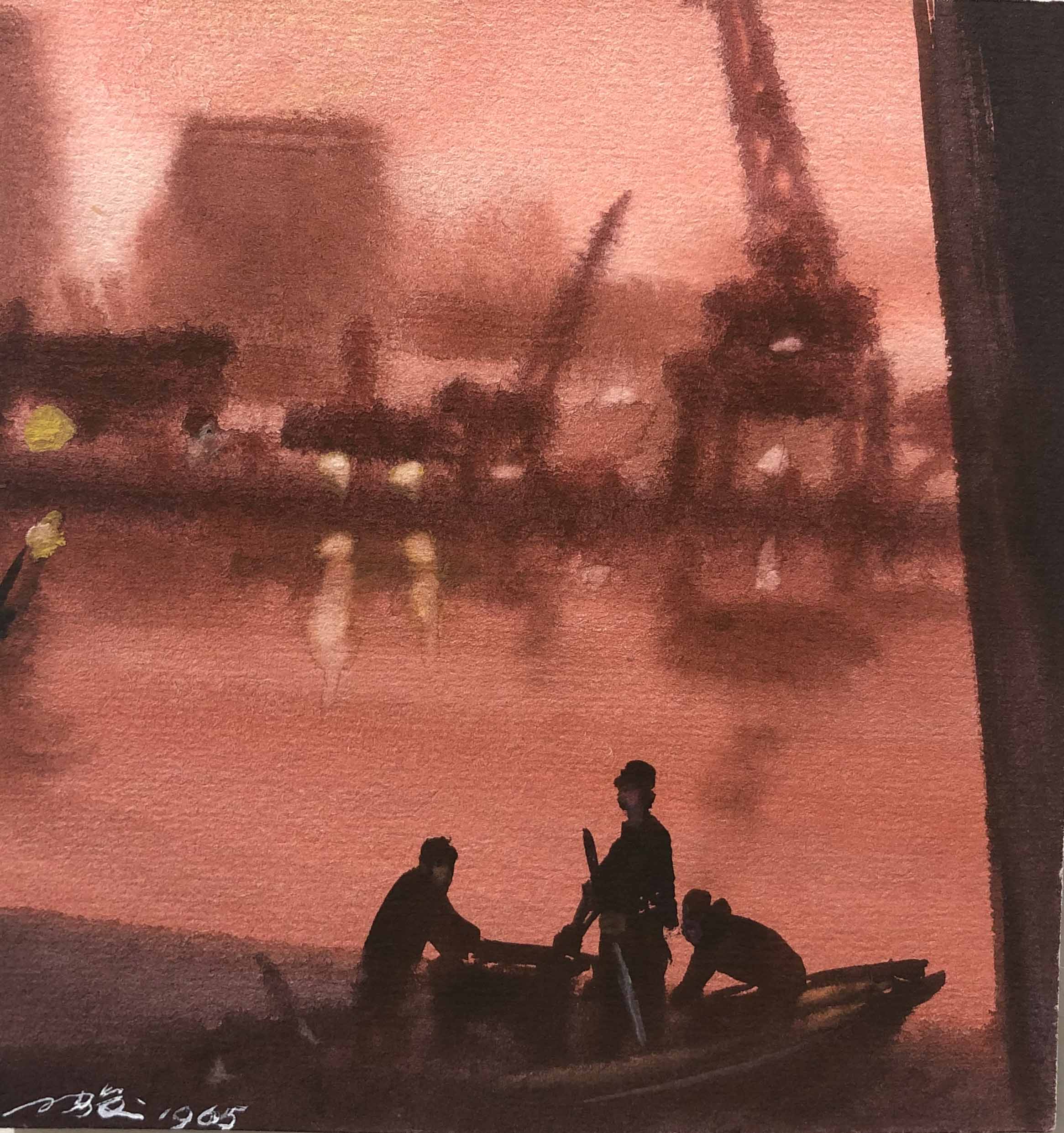
4. During the academic years, you learnt both oil painting and watercolor, architecture and music. Why do you have passion for watercolour?
Yu Zijun: I have been keen on watercolour since the age of 5, as it fits in my personality. It has natural beauty with endless changes. The color is vibrant and clear. It can be drawn as freely as you wish. Its style is close to the Chinese ink and is an ideal lyrical type of art.
I am afraid of dealing with people, so I try not to draw people, especially adults, so most of my paintings are always scenery. Although it does not speak, it can communicate with people’s mind and bring up the poetic sense.

5. 经过数年的实验,您在上世纪八十年代独创了黑白肌理水彩,能否跟我们分享一下这些黑白机理水彩作品有何独特之处?
虞子骏:黑白肌理水彩很有特点,是真实与梦幻的结合。既能描述真实的形象又有自然的机理表达能力,让纸上水彩作品更富有景深与层次感,即有东方水墨的意境,又有西方水彩的具象表现。
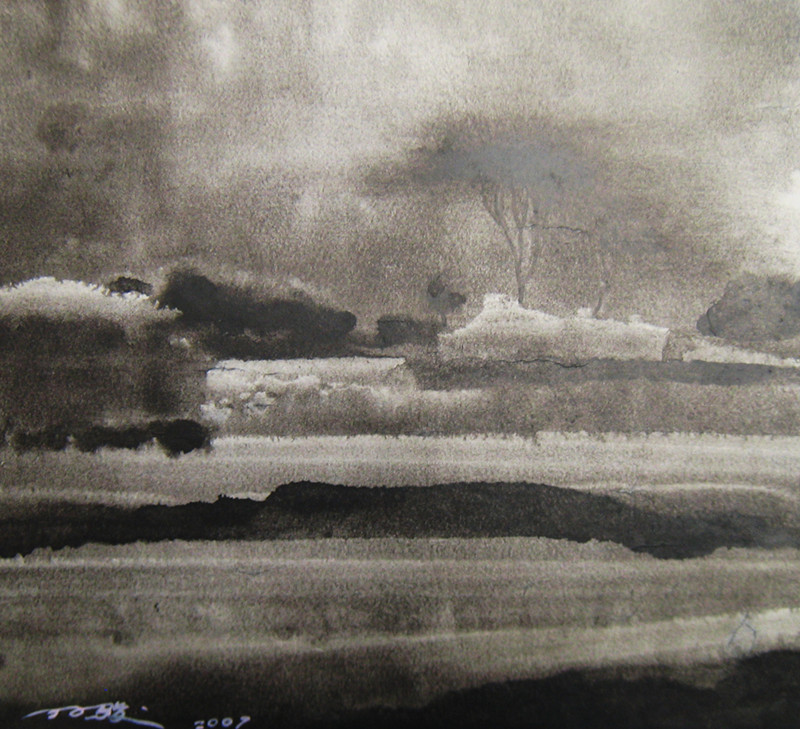
5. After several years of experiments, you created black and white texture watercolors in the 1980s. Could you share with us what is unique about these black and white watercolors?
Yu Zijun: Black and white texture watercolor is quite special, it is a combination of reality and dream. It can both depict the real image and the natural texture of water, which brings more depth and perspective of the watercolors on paper. It shows artistic conception of oriental art as well as the figurative representation of western watercolor.
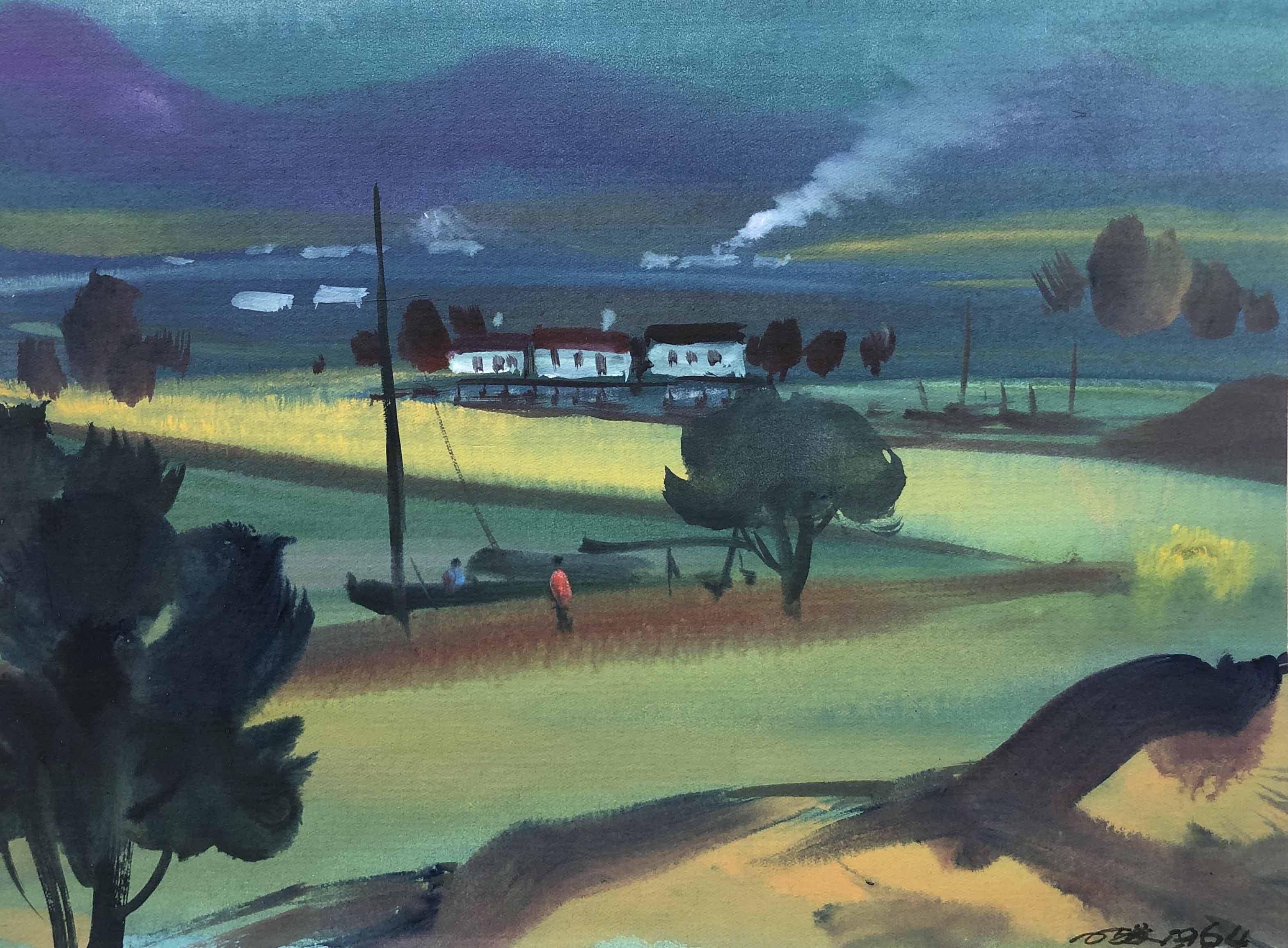
6. 您亲身经历了中国美术史的变迁,请问您是如何看待中国当代艺术的发展的?您有什么话想对中国的年轻艺术家说吗?
虞子骏:中国当代艺术的发展,有很多种形式,我仅探讨一下关于美术方面的话题。
我国美术发展在当前似乎并非十分兴旺,因为创新不易,很多年来我国在画界有不少创新,但并不持久,原因很多,归根到底是因不踏实而造成的。所以我希望青年画家一定要打好基础(包括文化,绘画技法以及其他艺术范畴领域内的知识),提高个人修养,不要一味地追求新的形式,而忽略了艺术表现的本质内容。
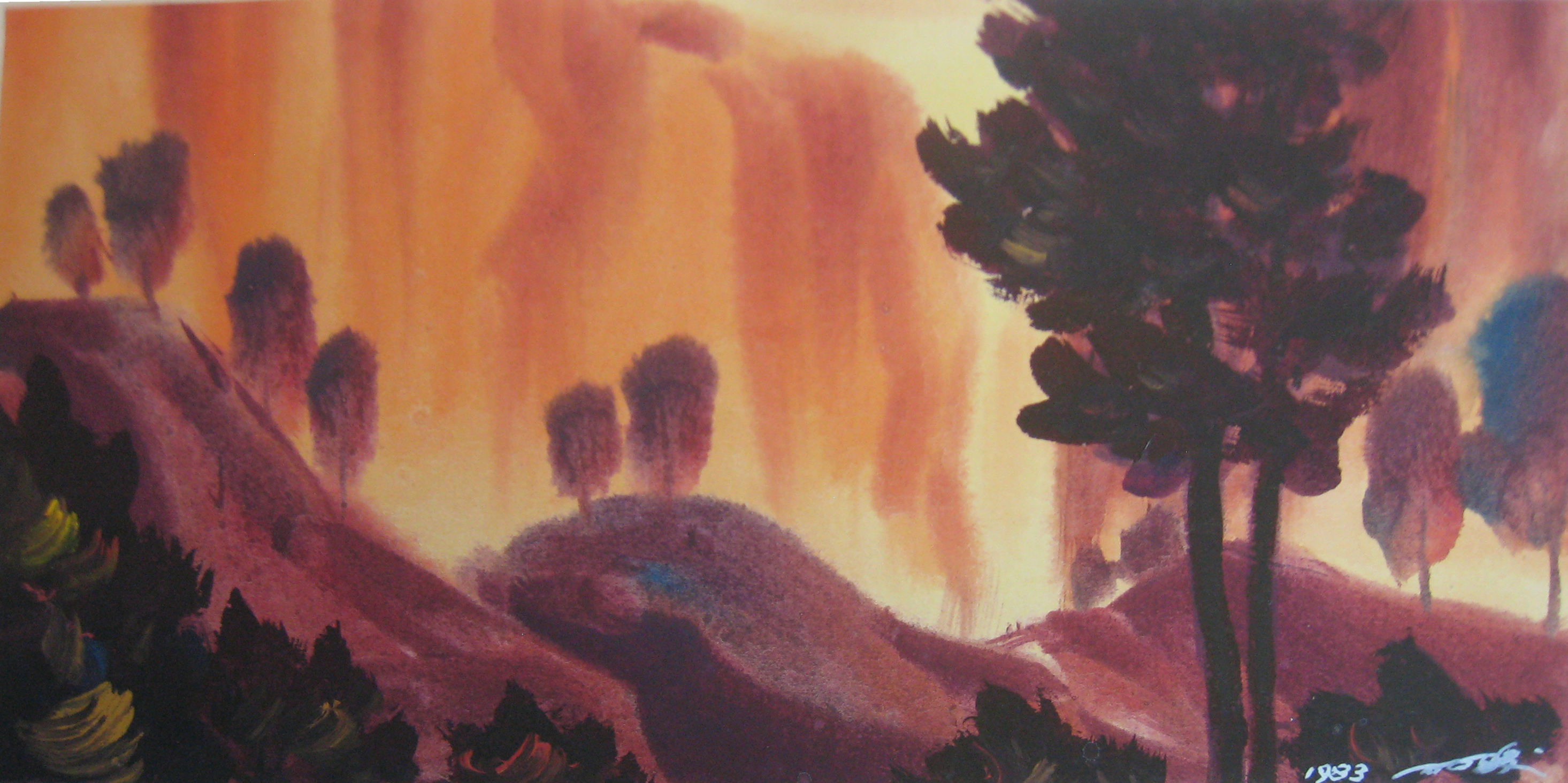
6. You have experienced the changes in the history of Chinese art personally. How do you perceive the development of Chinese contemporary art? Do you have anything to say to the young Chinese artists?
Yu Zijun: Chinese contemporary art has experienced a diversity of changes in many aspects. I will only discuss about fine art.At present, China’s fine art domain does not seem to be very prosperous, because the innovation is not easy. For many years, our country has had a lot of innovation in fine art, but it is not lasting long due to many reasons. Ultimately, it is caused by not being profound and strongly rooted enough. I hope that young artists should lay a good foundation (including knowledge in culture, drawing techniques and other areas relating to art), improve personal cultivation, do not blindly pursue new forms on the surface, and overlook the essentials of art.

